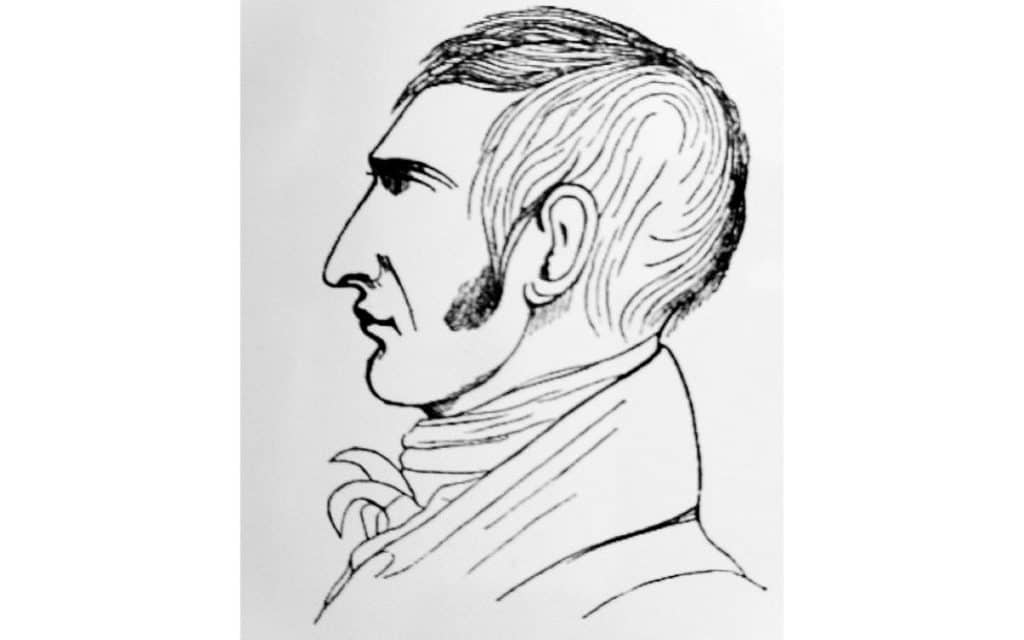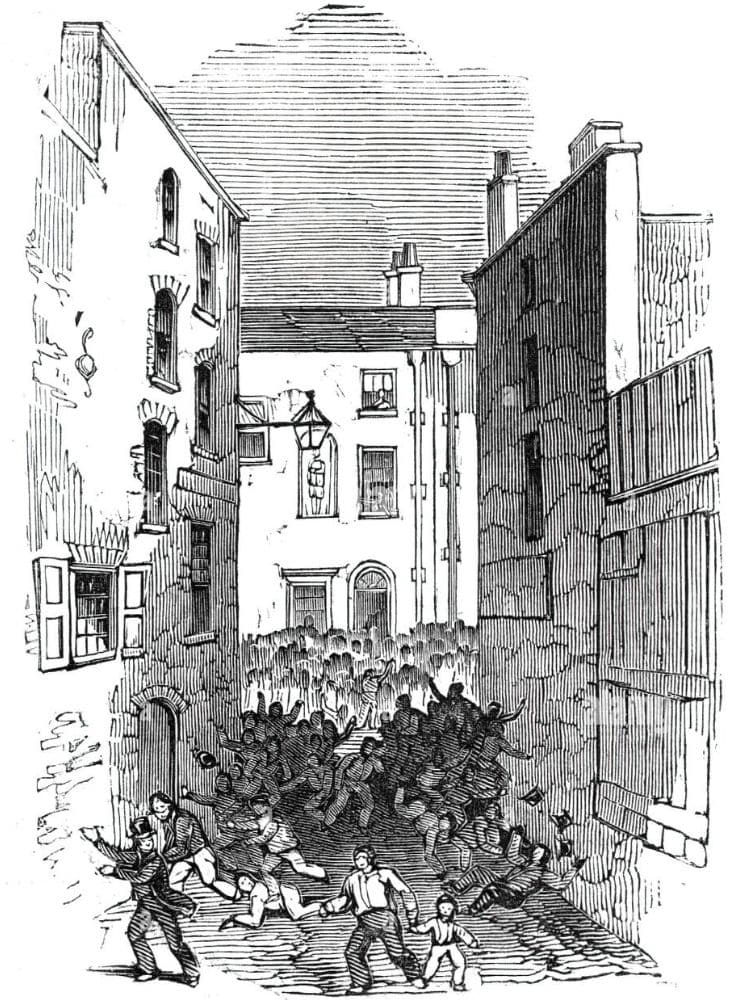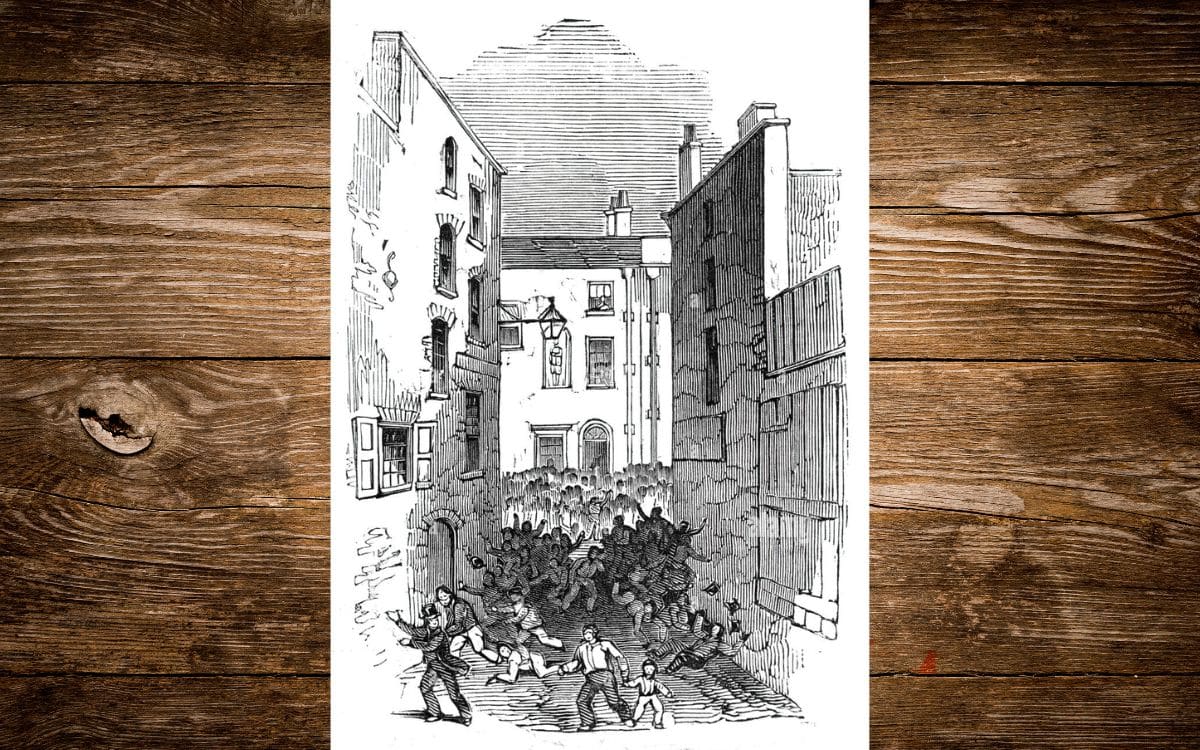A notorious Victorian killer William Saville, who was hanged in Nottingham, may still haunt Gallows Hill, where echoes of murder and tragedy linger to this day
A notorious Victorian killer William Saville, who was hanged in Nottingham, may still haunt Gallows Hill, where echoes of murder and tragedy linger to this day.
Dark deeds stain the ground beneath Nottingham’s Gallows Hill, where a Victorian murderer swung for his crimes and may yet linger in restless spirit.
What is Gallows Hill, Nottingham?
Long before city streets swallowed it, Gallows Hill stood grim on Nottingham’s outskirts, a bald slope used for centuries to dispatch justice’s final blow.
Public executions drew roaring crowds who jostled for vantage points as prisoners mounted the scaffold beneath the open sky.
By the 19th century, this tradition remained strong, and on 8 August 1844, it hosted one of Nottingham’s most notorious spectacles: the hanging of William Saville.
Saville was no petty crook.
Born in 1815 in Nottingham, he worked as a lace runner and married Ann, his first wife.
Scandal followed when, still married, he seduced an unsuspecting servant girl named Mary Swann, vanished with her to Sheffield, and soon married her bigamously.
They returned to Nottingham, settled in Red Lion Square, and had three children.
But Saville’s debts mounted.

He pawned possessions, dodged bailiffs, and drifted between addresses like a man living on borrowed time.
On 19 May 1844, Saville led Mary Swann and their children on a Sunday stroll along the quiet footpaths beside Colwick Wood.
Only Saville returned.
Passers-by later discovered Mary and the children brutally murdered among the trees, their throats cut so savagely the coroner hesitated to describe the wounds.
A bloody knife turned up near the bodies.
Suspicion fell squarely on Saville, who first protested innocence, then blamed highway robbers.
His story crumbled under questioning, and the jury swiftly found him guilty.
The murder shocked Nottingham.
Newspapers printed lurid details of the crime, describing blood-drenched clothing, hidden knives, and Saville’s shifting statements.
Crowds thronged to glimpse the man who could butcher his own family.
By the day of the hanging, the city seethed with morbid curiosity.
Chaos at the Gallows
When the moment came, Saville was led to the scaffold outside Nottingham’s Shire Hall, watched by tens of thousands.
But as the trapdoor dropped and the crowd began to disperse, tragedy struck. The vast press of people surged forward, crushing against barriers and stone walls. On the narrow steps of Garner’s Hill, men, women, and children were swept off their feet.
Bodies tumbled down the stairs, limbs broke, and clothing was torn away in the chaos. Twelve people died in the stampede, many of them teenagers or children, and around 150 more were injured.
It was said the disaster horrified Nottingham even more than Saville’s crimes.
In the aftermath, public executions in Nottingham were moved behind prison walls to prevent such tragedies ever happening again.

Hauntings of Gallows Hill
Some say Gallows Hill has never entirely forgotten William Saville.
Locals speak of cold gusts swirling around the old execution site even on windless days.
People walking dogs at dawn claim to hear gasping sobs, though no one stands upon the slope.
A few insist they have glimpsed a man in a tattered Victorian suit pacing the grass, clutching something close to his chest.
When they step closer, he vanishes like a blown-out candle.
The strangest tales come from those who recall the chaos of Saville’s execution.
Some believe the souls of the stampede victims haunt Gallows Hill alongside Saville, doomed to linger where curiosity proved fatal.
Visitors report uneasy feelings around the site.
A flicker of movement glimpsed from the corner of the eye.
The snap of twigs with no footfall to follow.
Locals shrug it off as tricks of the light, but the place seems to brood, as if the earth itself remembers Saville’s final moments.
Visiting Gallows Hill
Today, Gallows Hill has melted into Nottingham’s urban sprawl, but its rough contours remain near the modern Sneinton area.
There is no grand memorial to Saville’s victims, only a sloping patch of ground watched over by silent trees.
Walkers can trace the path where execution crowds once gathered, though few linger long after dark.
Nottingham’s archives hold records of the trial, with original documents and grisly reports preserved for the curious researcher.
Those fascinated by true crime or the supernatural might pair a visit to Gallows Hill with a stroll through Colwick Woods, where the murders occurred.
The paths remain wooded and secluded, and silence can fall thick as fog among the trees, a stark reminder of a Sunday stroll that ended in slaughter.
Gallows Hill stands as a quiet witness to bloodshed and punishment, its soil steeped in stories of a man who betrayed his family and met justice twice: once by the rope, and again in the stampede that followed.
Whether William Saville’s troubled spirit still prowls the slope is a question no court can answer.
Yet the breeze sighing through the grass seems to whisper that not all sentences end at the scaffold’s drop.
Have you ever visited Gallows Hill or felt a chill around Nottingham’s haunted sites? Tell us your thoughts in the comments below!



